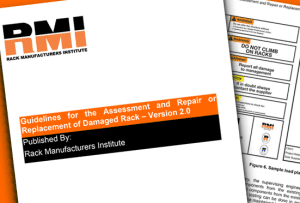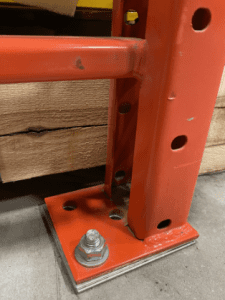Ensuring the safety of your employees is the primary reason for anchoring your pallet rack. Forklift accidents, earthquakes, and unexpected incidents can cause the racks to collapse, which can result in serious injury, or even death, for anyone nearby. The footplate and anchors of the racks are specifically designed to keep the frames stable in such situations.
Check the facts
Anchoring your pallet racking is not a suggestion, but a requirement according to the guidelines set forth by the Rack Manufacturers Institute (RMI). Failure to comply with these guidelines can result in safety citations and fines from OSHA under section 1910.176(b). Additionally, there may be additional building and safety codes in your jurisdiction that apply to the anchoring of pallet racks, so it’s important to check local regulations.
forth by the Rack Manufacturers Institute (RMI). Failure to comply with these guidelines can result in safety citations and fines from OSHA under section 1910.176(b). Additionally, there may be additional building and safety codes in your jurisdiction that apply to the anchoring of pallet racks, so it’s important to check local regulations.
When it comes to the surface on which your pallet racks will be installed, concrete is the most suitable option due to the weight of the systems. The surface should be in good condition without major cracks and be level, although minor adjustments can be made for individual uprights with shims.
Most footplates are designed with two anchor holes, but only one hole is typically needed for installation. However, it’s important to consult the manufacturer’s specifications for your specific racking system to determine if additional anchors are necessary or if installing two anchors close together may compromise the integrity of the concrete surface.
There are two main types of anchors used for pallet racking: wedge anchors and strike anchors. Wedge anchors are made of various types of steel and are designed for solid concrete. Strike anchors expand upon impact and are also commonly used in warehouse installations. To install the anchors, a hammer drill with a bit the same size as the anchor is used to drill holes between 2.75 to 6 inches, depending on requirements.
Wedge anchors are made of various types of steel and are designed for solid concrete. Strike anchors expand upon impact and are also commonly used in warehouse installations. To install the anchors, a hammer drill with a bit the same size as the anchor is used to drill holes between 2.75 to 6 inches, depending on requirements.
One stop shop
If you have any questions or need assistance with the installation of your pallet racks, reach out to a racking expert at Abel Womack for help with layout, specification, procurement, and installation services. We’ve got you covered.



Leave a Reply
You must be logged in to post a comment.